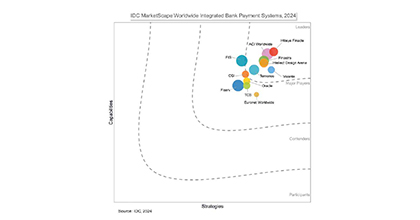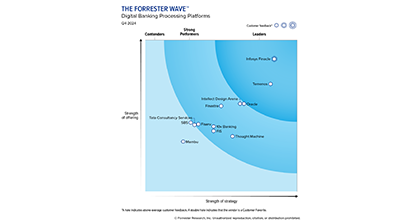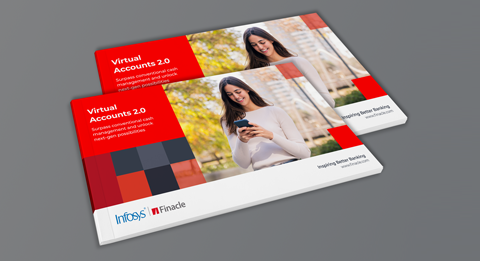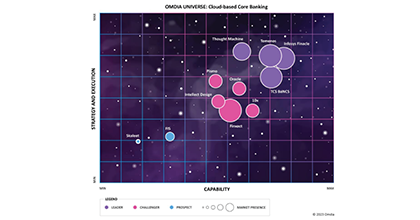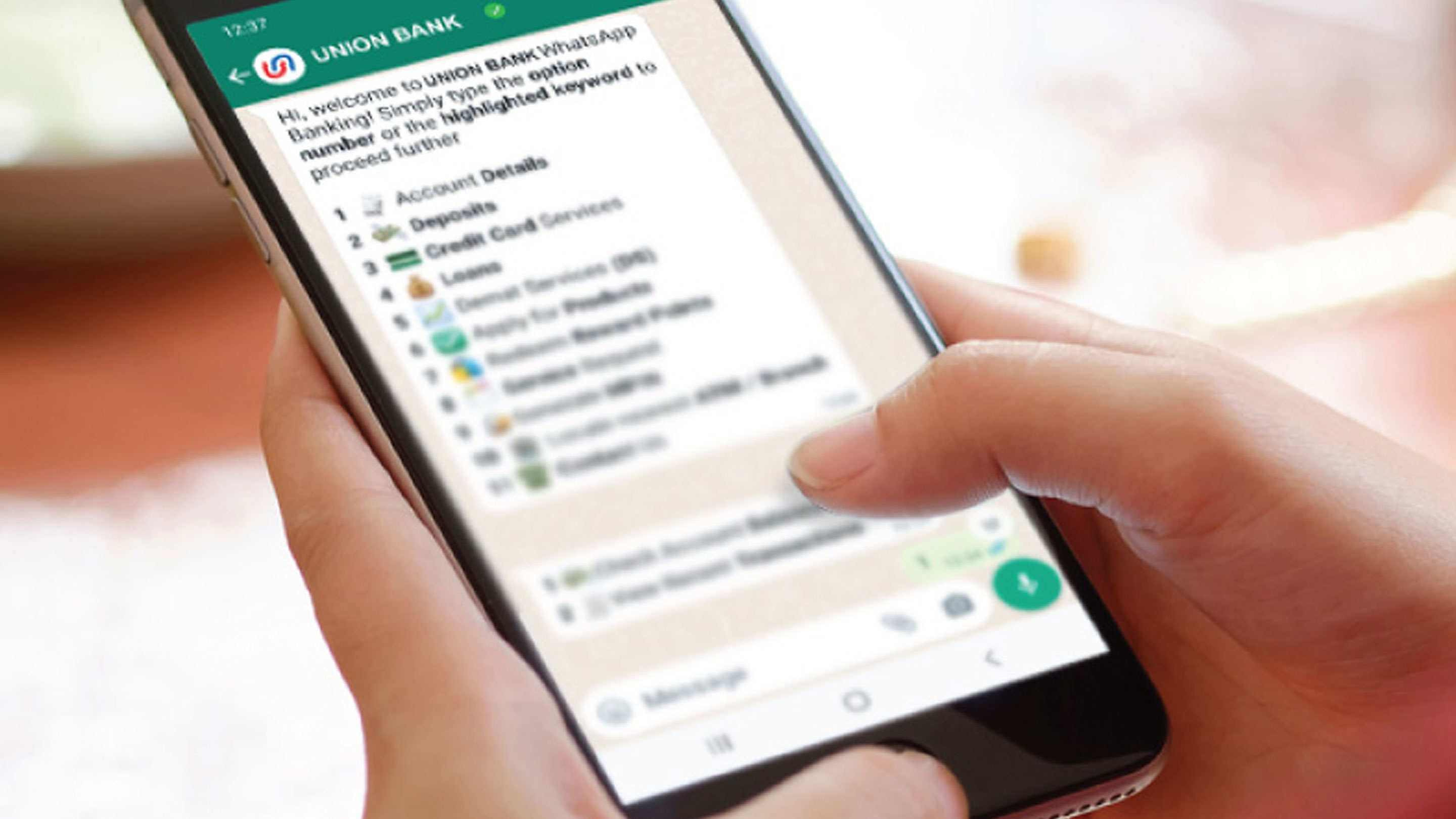-
![]() Quantum Computing: As the Future Awaits, The Strides Are DefinitiveQuantum computing is no longer confined to theory or the edges of experimental science - it is rapidly advancing toward practical impact.Read More
Quantum Computing: As the Future Awaits, The Strides Are DefinitiveQuantum computing is no longer confined to theory or the edges of experimental science - it is rapidly advancing toward practical impact.Read More -
![IDC IDC]() IDC MarketScape: Worldwide Integrated Bank PaymentFinacle Payments is an enterprise payments services system that manages end-to-end payments across instrument types, payment schemes, transaction types, customeRead More
IDC MarketScape: Worldwide Integrated Bank PaymentFinacle Payments is an enterprise payments services system that manages end-to-end payments across instrument types, payment schemes, transaction types, customeRead More -
![]() Supply Chain FinanceToday, as businesses seek to make their ecosystems more resilient, Supply Chain Finance (SCF) has emerged as a powerful lever for banks and financial institutions to support clients, while unlocking new revenue streams.Read More
Supply Chain FinanceToday, as businesses seek to make their ecosystems more resilient, Supply Chain Finance (SCF) has emerged as a powerful lever for banks and financial institutions to support clients, while unlocking new revenue streams.Read More
-
![]() The Future of Core Banking: Business and Technology EvolutionOur point of view paper, “The Future of Core Banking: Business and Technology Evolution”, serves as a candid and forward-looking benchmark of your institution’s readiness—and a strategic playbook for core modernization.Read More
The Future of Core Banking: Business and Technology EvolutionOur point of view paper, “The Future of Core Banking: Business and Technology Evolution”, serves as a candid and forward-looking benchmark of your institution’s readiness—and a strategic playbook for core modernization.Read More -
![The Forrester Wave The Forrester Wave]() Forrester Wave Digital Banking, Q4 2024Finacle is best suited for large retail, SMB, and corporate banks who seek a modern, comprehensive, innovative platform with superior support.Read More
Forrester Wave Digital Banking, Q4 2024Finacle is best suited for large retail, SMB, and corporate banks who seek a modern, comprehensive, innovative platform with superior support.Read More -
![]() Driving Comprehensive Revenue ManagementDiscover why revenue management must evolve into a comprehensive, strategic capability. Decode a blueprint to overcome challenges and unlock sustainable monetization.Read More
Driving Comprehensive Revenue ManagementDiscover why revenue management must evolve into a comprehensive, strategic capability. Decode a blueprint to overcome challenges and unlock sustainable monetization.Read More
-
![]() Shaping Banking’s Next: Banking Technology Trends for 2025 and BeyondThe banking industry has been balancing disruption and opportunity for several years now, and the pace of change shows no signs of slowing as we move into 2025 and beyond.Read More
Shaping Banking’s Next: Banking Technology Trends for 2025 and BeyondThe banking industry has been balancing disruption and opportunity for several years now, and the pace of change shows no signs of slowing as we move into 2025 and beyond.Read More -
![]() Virtual Accounts 2.0: Surpass Conventional Cash Management and Unlock Next-Gen PossibilitiesVirtual Account Management was a groundbreaking shift in the banking landscape, revolutionising use cases like cash concentration, pooling, centralised treasury management, and in-house banking (POBO, ROBO, COBO)Read More
Virtual Accounts 2.0: Surpass Conventional Cash Management and Unlock Next-Gen PossibilitiesVirtual Account Management was a groundbreaking shift in the banking landscape, revolutionising use cases like cash concentration, pooling, centralised treasury management, and in-house banking (POBO, ROBO, COBO)Read More -
![]() Unlocking Hybrid CloudAs banks push forward with their digital transformation agenda, cloud serves as a pivotal enabler. Each bank, at varying stages of adoption, crafts its unique path, dictated by context, regulations, and risk appetite.Read More
Unlocking Hybrid CloudAs banks push forward with their digital transformation agenda, cloud serves as a pivotal enabler. Each bank, at varying stages of adoption, crafts its unique path, dictated by context, regulations, and risk appetite.Read More
-
![]() Banking on CloudThis report from Infosys Finacle delves into the need for accelerating cloud adoption, highlights the current state of the industry, and puts forth key recommenRead More
Banking on CloudThis report from Infosys Finacle delves into the need for accelerating cloud adoption, highlights the current state of the industry, and puts forth key recommenRead More -
![]() Omdia Universe | Cloud-based Core BankingIn the report, Omdia highlights the following key capabilities of leading cloud-based core banking providers:Read more
Omdia Universe | Cloud-based Core BankingIn the report, Omdia highlights the following key capabilities of leading cloud-based core banking providers:Read more
-
![]() Emirates NBDEmirates NBD consolidates its operations on a single version for scalability, agility, and standardization.Read More
Emirates NBDEmirates NBD consolidates its operations on a single version for scalability, agility, and standardization.Read More -
![]() A Global Top 5 BankDiscover how a global top 5 bank headquartered in the US accelerated payments transformation.Read More
A Global Top 5 BankDiscover how a global top 5 bank headquartered in the US accelerated payments transformation.Read More -
![]() Union Bank of IndiaUnion Bank of India launches Union Virtual Connect (UVConn) by leveraging WhatsApp to provide customers personalized banking services.Read More
Union Bank of IndiaUnion Bank of India launches Union Virtual Connect (UVConn) by leveraging WhatsApp to provide customers personalized banking services.Read More

Are Platform Banking and Bank-As-A-Platform, One & the Same?
Blogs
The information industry has evolved from monolithic applications, to client-server technology, to thin connections, to components & services, and the latest in this trend is ‘platform’. The significance of ‘platform’-ing an application varies in different degrees for different industries. ‘Platformification’ is becoming increasingly significant in banking or in the financial industry at large. The common understanding of platform in banking industry can be well described by using key words such as ‘standardization’, ‘industrialization’, ‘open architecture’, ‘intuitive’, ‘personalized’, ‘model driven’, ‘componentized’, ‘cloud ready’, ‘API enabled’, and more. While all are required to complete the definition of a platform, the best platform is one that allows the business to innovate and differentiate.
Application Programming Interface, more commonly known as ‘API’ is a key aspect that can elevate an application from the current state to a platform. APIs empower the application to allow exposure to business rules, definitions and usability in a manner that can be easily adapted to a given scenario thus providing a seamless methodology to integrate applications and components of varying maturity implemented for different technologies. While there are several other aspects such as data models, DB agnosticism, layered architecture which play an important role in re-inventing an application into a platform APIs are the key ingredients in this journey. The more open an application becomes by using APIs, the closer it moves towards becoming a platform.
There are several standards in the API industry and slowly these are getting converged into one or two major groups. Native APIs, RPCs, SOAP APIs, REST APIs are coming together and we will soon witness most of these getting mapped to some sort of standard way of representation of application business.
The core matter to consider is that whether platform banking and bank as a platform are one and the same? Do APIs in terms of definition and applicability carry the same relevance in these two aspects?
While it appears in the current state that the two convey the same meaning, we are beginning to clearly see the distinction between the two. Platform banking will continue to evolve the way it is currently going, helping banks open up more and more services for internal and external players and to re-imagine banking business through various means. However, it will still continue to revolve around the services, offers and differentiations provided by the banks or associated entities including Fin-Techs. Banking as a platform will soon imbibe an altogether different meaning and it will allow the clients or more commonly known as ‘account holders/CIF’ of the banks to reimagine banking in a way that is highly personalized to individuals. The journey on this front has already commenced for corporates and it will spread to retailers and individuals in a short span of time.
To differentiate the two aspects in a better way, let us consider the following examples:
Financial institutions including banks would like to separate processing of payments (including non-financial messages) from the core banking applications. This necessitates the payment processing hub functionality to be separated out and configured as a platform through which banks can interface with various standardized payment gateways. The platform is expected to be open in terms of architecture, must have API support, be extendable for corporate cash management processing, be cloud ready and so on. This qualifies the definition of platform banking.
A retail customer of the bank would like to configure and personalize an investment product as per his/her requirement. This would involve user experience, modularity, abstraction, compliance and the ability to manage individual products designed by a bank’s customers. The ‘bank’ will be abstract in this case and ‘banking’ for all practical purposes will be carried out by the customer. This requires the bank or banking to be available to all customers/prospects as a platform. Re-imagined APIs will enable this aspect.
Therefore, APIs will evolve into another ‘avatar’ to enable bank become a platform for its customers. The differentiation of platform banking and bank-as-a-platform will further help APIs to drive differentiation and simplification of the industry as a whole. The eco-system involving ERP systems, cloud ISVs, Fin-Techs will harmonize more and the banking community as a whole will altogether leap into significantly higher orbit. With changes in lifestyles and behaviors, banking will become more and more visible to customers and bank by itself will remain invisible to a large extent.


Download the Latest Report
The Future of Core Banking: Business and Technology Evolution


©2025 -Edgeverve Systems Limited | All rights reserved

